FIRST AID KIT
Each country has its own legislation about the presence of first aid kits in workplaces. Common sense suggests to keep an easily accessed first aid kit in any workplace with all the necessary equipment. The content will change according to the danger of the workplace.
On 12 June 1989 the European Council promulgated a Directive (89/391/eec) for the purpose of the safety and health of workers in workplaces. The principles of the Directive are general, and the member states had three years time (until 31 December 1992) to transpose them to their national laws. Since its first issue, the directive has been time and again corrected, incorporated and amended (2003, 2007 and 2008). Article 8 of the directive in particular is about first aid, fire-fighting and evacuation of workers, and establishes the specific responsibilities of the employer in case of health emergency or fire, and the fact that a worker that flees danger leaving a workstation unattended must be protected against any unjustified consequence. Moreover, the training on safety and health of the workers is the employer's own responsibility, (principle reaffirmed in the Article 12).
Art. 8, paragraph 1 and 2: "The employer shall take the necessary measures for first aid, fire-fighting and evacuation of workers, adapted to the nature of the activities and the size of the undertaking and/or establishment and taking into acocunt orher persons present, arrange any necessary contacts with external services, particularly as regards first aid, emergency medical care, rescue work and fire-fighting.
2. Pursuant to paragraph 1, the employer shall, inter alia, for first aid, fire-fighting and the evacuation of workers, designate the workers required to implement such measures. The number of the workers, their training and the equipment available to them shall be adequate, taking account of the size and/or specific hazards of the undertaking and/or establishment".
Then again, paragraph 5, same article: "The employer shall ensure that all workers are able, in the event of serious and imminent danger to their own safety and/or that of other persons, and where the immediate superior responsible cannot be contacted, to take the appropriate steps in the light of their knowledge and the technical means at their disposal, to avoid the consequences of such danger. (...)"
But first aid kits are not only used in workplaces. It is common sense to keep a first aid kit at home and one in the car, and check it regularly to substitute expired or broken products. The content of a first aid kit may vary, it is usually based on personal needs. The American Red Cross recommends the following content for a home first aid box for a family of four:
"_ 2 absorbent compress dressings (5 x 9 inches)
_ 25 adhesive bandages (assorted sizes)
_ 1 adhesive cloth tape (10 yards x 1 inch)
_ 5 antibiotic ointment packets (approximately 1 gram)
_ 5 antiseptic wipe packets
_ 2 packets of aspirin (81 mg each)
_ 1 blanket
_ 1 breathing barrier (with one-way valve)
_ 1 instant cold compress
_ 2 pair of nonlatex gloves (size: large)
_ 2 hydrocortisone ointment packets (approximately 1 gram each)
_ scissors
_ 1 roller bandage (3 inches wide)
_ 1 roller bandage (4 inches wide)
_ 5 sterile gauze pads (3 x 3 inches)
_ 5 sterile gauze pads (4 x 4 inches)
_ oral thermometer (non-mercury/nonglass)
_ 2 triangular bandages
_ tweezers
- first aid instruction booklet"

